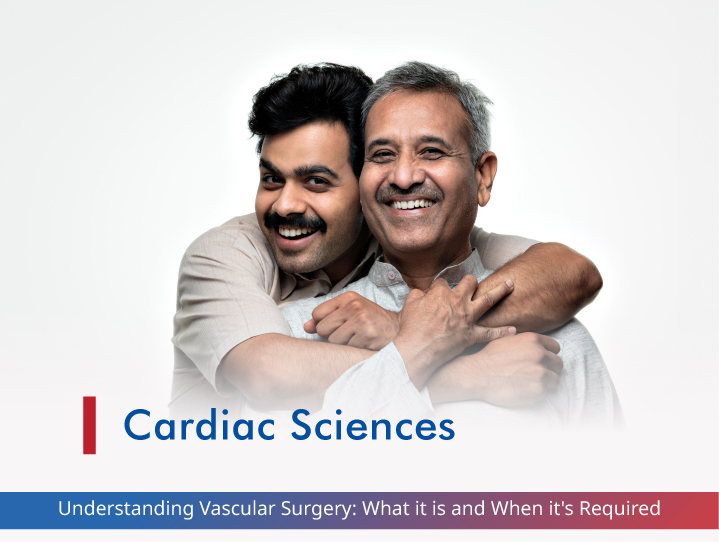The Present Scenario of Cardiovascular Diseases in India
Cardiovascular diseases (CVDs) have become a serious and heartbreaking problem in India, causing immense suffering and loss. According to a study released by the World Health Organisation (WHO), CVDs are now the leading cause of death in India, responsible for over 28% of all deaths.
The situation is getting worse, with more and more people developing risk factors like high blood pressure, diabetes, obesity, and making unhealthy lifestyle choices. The crisis is even more severe in cities. Rapid urbanisation, sedentary lifestyles, and poor eating habits are leading to higher rates of CVDs in urban areas compared to rural regions.
This condition isn’t just a health issue—it affects families deeply, both emotionally and financially. The growing number of CVD cases is putting a significant strain on India’s healthcare system.
This alarming situation calls for immediate and strong action. There is the need to work together to create and implement effective strategies to fight this public health crisis. This guide is an attempt to give you the most relevant heart health information that can help you in protecting yourself from this dangerous condition.
What are Cardiovascular Diseases or CVDs?
CVDs are a group of disorders that affect the heart and blood vessels. They can range from congenital heart defects to acquired heart conditions, such as coronary artery disease, heart failure, and stroke. At the core of most CVDs is the impairment of the cardiovascular system’s ability to effectively pump and circulate blood throughout the body, leading to a variety of health complications.
The cardiovascular system is a complex organ system consisting of different organs, vessels, and tissues that work together to deliver oxygen-rich blood to the body’s cells and remove waste products. When the cardiovascular system is compromised, it can result in a range of debilitating conditions that can impact an individual’s quality of life and overall health.
Types of Cardiovascular Diseases & their Causes
1. Coronary Artery Disease (CAD): risk factors
This vascular condition is the most common type of CVD. It is characterised by plaque buildup in the arteries responsible for supplying blood to the muscles of our heart. Dr. Vikranth Veeranna says that this buildup can lead to narrowing or blockage of the arteries, resulting in chest pain (angina) and potentially a heart attack.
Causes: Unhealthy lifestyle factors, such as poor diet, lack of exercise, smoking, and high cholesterol levels
2. Heart Failure:
A condition in which the heart cannot pump blood effectively, thus causing fluid buildup in the lungs and other parts of the body.
Causes: Underlying conditions like CAD, high blood pressure, or damage to the heart muscle
3. Stroke:
Any disruption or stoppage in the blood supply to the brain can lead to damage to the brain cells and potentially long-term disability or death.
Causes: Blockage or rupture of blood vessels in the brain, often due to the same risk factors as CAD
4. Arrhythmias:
Arrhythmia, also known as abnormal heart rhythms, occurs when a person experiences heartbeats that are too fast, too slow, or irregular.
Causes: Electrical conduction issues within the heart, often related to underlying heart conditions or damage
5. Valvular Heart Diseases:
Valvular heart diseases are medical conditions that affect the heart’s valves. These valves can become narrowed, leaky, or unable to close correctly.
Causes: Congenital defects, rheumatic fever, or age-related degeneration
6. Congenital Heart Defects:
Structural abnormalities in the heart that are present at birth can result in congenital heart defects.
Causes: Genetic factors or environmental influences often cause congenital heart defects during foetal development.
Common Risk Factors for Cardiovascular Diseases
A complex working of non-modifiable and modifiable heart disease risk factors influences the development of cardiovascular diseases. Recognising these factors is essential for individuals to take proactive steps towards maintaining cardiovascular health.
Non-Modifiable Risk Factors:
- Age: The risk of CVDs increases with age, particularly after the age of 45 for men and 55 for women.
- Gender: Males may have a significantly higher risk of developing CVDs compared to women, although the risk for women increases after menopause.
- Family History: Genetic predisposition and inherited traits can increase the risk of certain CVDs.
Modifiable Risk Factors:
These factors can be mitigated through lifestyle changes and using prescribed medicines, such as:
- Unhealthy Diet: A diet high in cholesterol, saturated fats, trans fats, and sodium can contribute to the development of CVDs.
- Physical Inactivity: Lack of optimal physical activity can lead to excessive increase in weight, high blood pressure, and other risk factors.
- Smoking: Smoking is a significant risk factor responsible for developing CVDs, as it can damage the cardiovascular system and increase the risk of heart attack and stroke.
- Obesity: Excess body weight, particularly abdominal obesity, is associated with an increased risk of CVDs, as well as other conditions like diabetes and hypertension.
- High Blood Pressure: Clinically known as hypertension, this chronic medical condition can damage the blood vessels and increase the workload on the heart.
- High Cholesterol: Elevated LDL (bad) cholesterol levels can cause buildup of plaque in the arteries, leading to atherosclerosis and CVDs.
- Diabetes: This chronic condition can damage the blood vessels, thus increasing the risk of heart disease and stroke.
- Stress: Chronic stress can adversely affect the cardiovascular system, contributing to the development of CVDs.
How Daily Activities Can Affect Cardiovascular Disease?
Cardiovascular diseases can profoundly impact an individual’s daily activities and quality of life. Depending on the severity and type of the condition, the effects can range from mild to debilitating, such as:
- Physical Limitations: Conditions like coronary artery disease, heart failure, and valvular heart diseases can limit an individual’s physical capacity, making it challenging to perform everyday tasks like climbing stairs, walking, or engaging in physical exercise.
- Fatigue and Shortness of Breath: Impaired cardiovascular function can lead to increased fatigue and breathlessness, even during light activities, making it difficult to maintain an active lifestyle.
- Emotional and Psychological Impacts: The diagnosis and management of a cardiovascular disease can take a toll on an individual’s mental health, leading to feelings of anxiety, depression, and stress, which can further impact daily functioning.
- Dietary and Lifestyle Modifications: Individuals with CVD may need to make significant changes to their diet, physical activity levels, and overall lifestyle to manage their condition, which can disrupt their daily routines and social interactions.
- Increased Healthcare Needs: Frequent medical appointments, hospitalisations, and the need for regular treatment and monitoring can put an excessive burden on an individual’s time and resources, affecting their daily activities and responsibilities.
How to Lower the Risks and Prevent Cardiovascular Disease?
Reducing the risk and preventing the development of cardiovascular diseases requires a multifaceted approach that addresses modifiable and non-modifiable risk factors. Here are some key strategies:
1. Adopt a Healthy Lifestyle:
- Maintain a balanced, heart-healthy diet rich in fruits, organic vegetables, whole grains, lean proteins, and healthy fats.
- Start regular physical activity (brisk walking, cycling, or swimming). Aim for at least 150 minutes per week.
- Quit smoking
- Try to mitigate your stress through relaxation techniques, social support, and stress-reducing activities.
2. Manage Existing Medical Conditions:
- Maintain optimal blood pressure levels through lifestyle modifications and, if necessary, medication.
- Control blood glucose levels for individuals with diabetes through medication, diet, and regular monitoring.
- Manage cholesterol levels by adopting a healthy diet, engaging in physical activity, and, if needed, taking cholesterol-lowering medications.
3. Undergo Regular Screening and Checkups:
- Schedule routine health checkups with your doctor to monitor your cardiovascular health.
- Undergo screening tests, such as blood pressure checks, cholesterol tests, and electrocardiograms (ECGs), to identify any potential issues early on.
- Discuss your personal and family history of cardiovascular diseases with your doctor to determine your risk and develop a personalised prevention plan.
4. Seek Professional Guidance:
- Consult a cardiologist or a physician specialising in cardiovascular care for personalised advice and management strategies.
- Participate in cardiac rehabilitation programs, which can help individuals with existing CVDs improve their physical and mental well-being.
- Stay up-to-date about the latest advancements in cardiovascular care and actively engage in your healthcare decisions.
By implementing these strategies, individuals can take proactive steps to lower their risk of developing cardiovascular diseases and maintain a healthy, active lifestyle.







